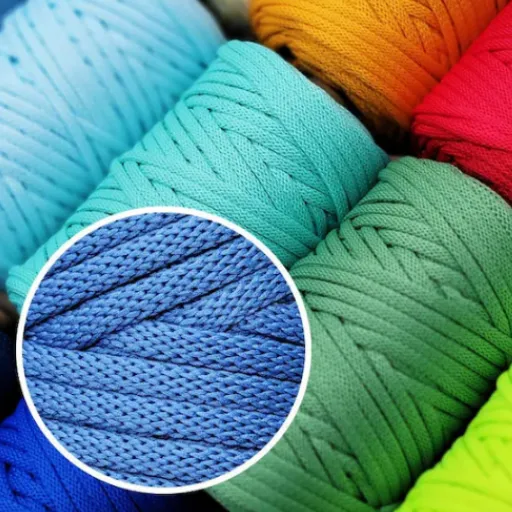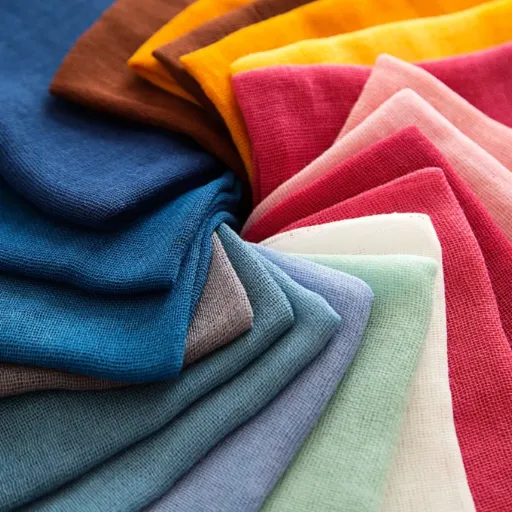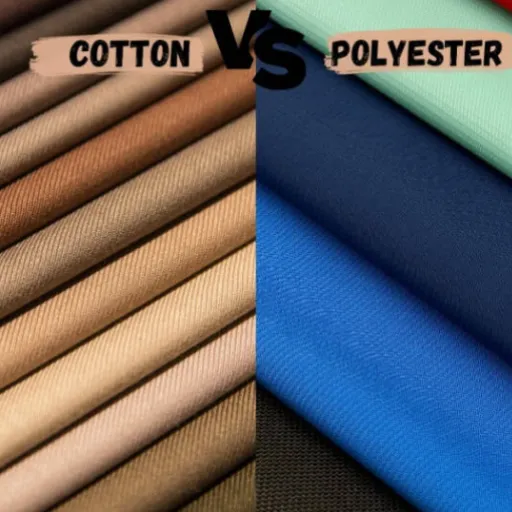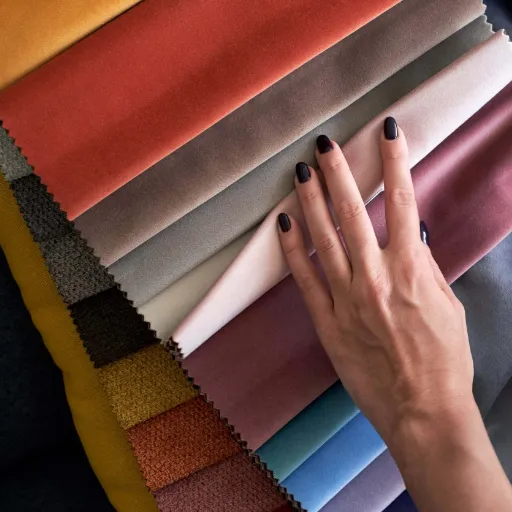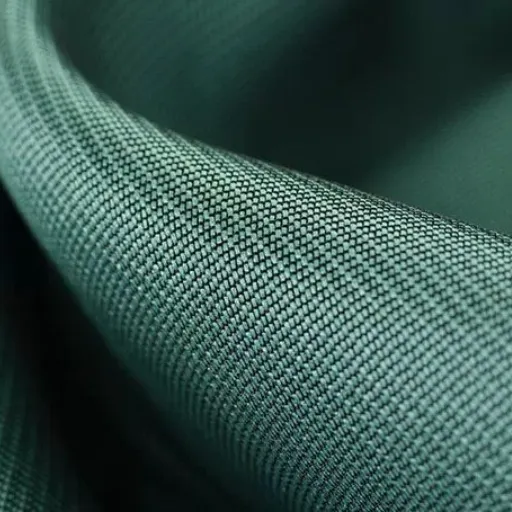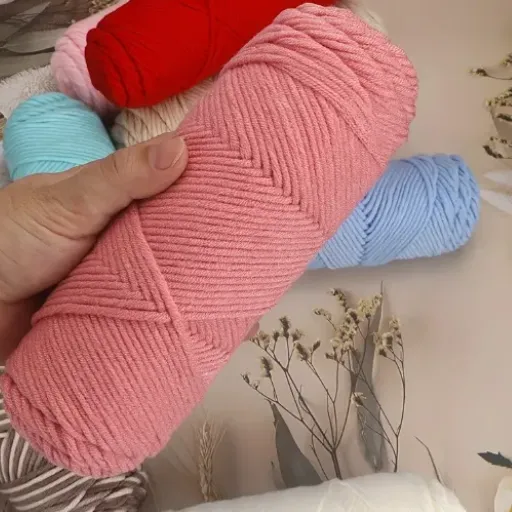Polyester is a synthetic fabric that has gained immense popularity all over the world and is widely used not only for clothing and upholstery but also for outdoor gear and home textiles. But still, some people keep asking, “How stretchy is polyester?” The response is complex—polyester’s stretchiness varies according to various factors like the type of fabric, its construction, and the presence of other materials in the blend. In this informative piece, we are going to take a closer look at polyester’s stretchability and classify the different types of polyester fabrics by their properties. This article will provide you with the knowledge if you are shopping for durable activewear, initiating your DIY project, or just being curious about the versatility of fabrics. So, let’s unravel the properties that make polyester the number one choice among textile manufacturers!
Introduction to Polyester Fabric
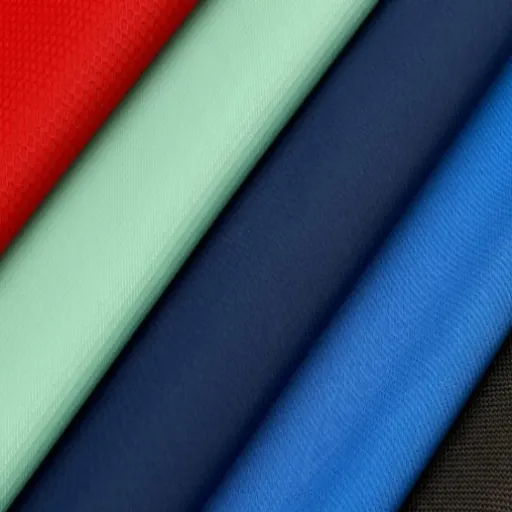
What is Polyester?
Polyester is a synthetic fiber that comes from polymers derived from petrochemicals, particularly from polyethylene terephthalate (PET). Owing to its long life span, flexibility, and low cost, it is one of the most used materials in the textile industry. The processes of making polyester fibers involve a chemical reaction between coal, oil, air, and water, which eventually produces long polymer chains that are then spun and woven into fabric.
Resilience is one of the primary properties of polyester, to say the least. The fabric is very resistant to stretching, shrinkage, and wrinkling, which are the reasons for its use in the production of quality and long-lasting garments. In addition, polyester dries fast, and it is also naturally moisture-wicking, which reason why it is widely chosen for active wear and outerwear. Its capability to hold vibrant colors also adds to its application in the fashion and upholstery industries.
Polystyrene is not only used for clothing but also for many other things like home décor, industrial goods, and even packaging. Its versatility comes from the fact that it can be mixed with other fibers like cotton or wool, which then enhances the properties of both materials. In a nutshell, the properties of polyester, such as adaptability and cost-efficiency, have cemented its position as a significant material in contemporary textile manufacturing.
History and Development of Polyester
The synthetic fiber known as polyester was first introduced in the early 1900s when it was called a revolutionary material in the textile industry. The story of polyester goes back to the 1930s when the British chemists John Rex Whinfield and James Tennant Dickson created polyethylene terephthalate (PET) which later became the basic raw material for polyester fibres. The material attracted the attention of many for its properties like strength, durability, and resistance to wrinkling, and it soon became a highly demanded and used in the textile industry as a substitute to natural fibers in many applications.
In the second half of the twentieth century, the improvement of the technologies used in making polyester enabled the fiber to be produced in large quantities which in turn made it cheap and more available in various markets. This phase was a major turning point, and for that reason, polyester was already the main player on the commercial textile market by then. The 1970s saw the rise of polyester clothes particularly because of their low price and little washing care; hence, the fabric was practically grabbed within the fashion industry as a constant ally of everyday wear.
Polyster is still changing and bettering itself with regards to both production and functionality. The opening up of possibilities for sustainable innovations, one of which is the production of polyester from recycling of materials like plastic bottles, has been instrumental in the trend towards environmental concern in the manufacturing industry. Its versatility is still unmatched which guarantees that polyester will remain a part of the textiles as well as industries like automotive, industrial and home goods.
Benefits of Using Polyester Fabric
Durability, in particular, is among the exceptional qualities that characterize polyester fabric. Thus, it is very resistant to wear and tear. The fabric’s strong fibers are able to last under frequent use, thus ensuring a longer life for both clothing and industrial applications. The constant use of polyester in men’s and women’s clothing is one of the reasons why the material is over 90% resistant to shrinking, stretching, and wrinkling. The fabric’s greater resistance brings us to a good choice for daily use.
Polyester fabric’s another major advantage is its non-absorbent nature, which hence could dry quickly. This very feature makes polyester suitable for sportswear, outdoor jackets, and other places where moisture-wicking is of primary importance. Due to its water-repellent nature, the fabric is less vulnerable to staining, thus making maintenance and cleaning easier.
Polyester is a fabric that can be molded in various ways and is very open to creativity. It can be woven into different patterns, mixed with other fibers for specific qualities, or treated for better performance, such as greater breathability or resistance to UV rays. This versatility is what keeps polyester as a primary material for fashion and even high-tech textiles, and the list continues.
Types of Polyester Fabrics
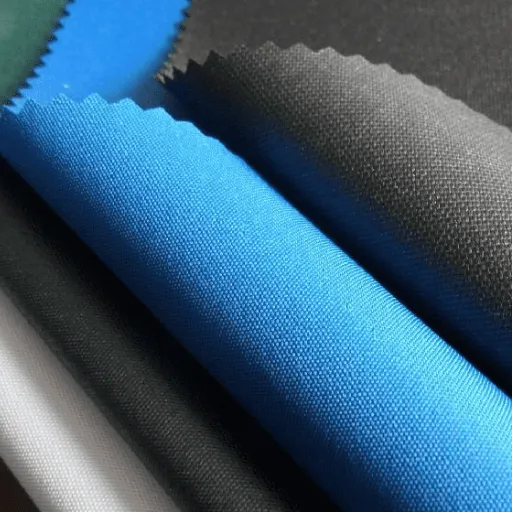
Different Types of Polyester
Nowadays, there is a wide range of polyester fabrics, and they all have different features and serve various purposes. Besides that, some of the most used types of polyester are listed below, together with their specific properties:
| Polyester Type | Key Characteristics | Common Applications |
|---|---|---|
| PET (Polyethylene Terephthalate) | Most popular type; versatile and long-lasting; resistant to stretching, shrinking, and wrinkling | Textiles, furniture, sportswear, home fabrics |
| PCDT (Poly-1,4-Cyclohexylene Dimethylene Terephthalate) | Better elongation and lifespan than PET; extra stretch capability | Draperies, furniture, and industrial textiles |
| Microfiber Polyester | Ultra-thin fibers; soft and lightweight; highly absorbent; water-repelling; lint-resistant | Wiping items, sports wardrobe, bed linens |
| Recycled Polyester (rPET) | Made from recycled plastics (PET bottles); 30% reduced energy requirements; environmentally friendly | Sustainable fashion, eco-friendly textiles |
| Blended Polyester | Combined with cotton, spandex, or rayon; it offers softness, durability, and flexibility | Sportswear, casual wear, versatile apparel |
| High-Tenacity Polyester | Super strong and durable; highly resistant to abrasion and wear | Ropes, conveyor belts, automobile fabrics, heavy-duty products |
| Solution-Dyed Polyester | Best colorfastness; dyed during fiber production; UV and weather-resistant | Outdoor fabrics, patio furniture, awnings |
Note: It is much easier for consumers and manufacturers to make the right choices for their textile requirements by taking into account the various sorts of polyester and their particular uses, thus endorsing the properties of being functional, durable, and eco-friendly.
Polyester vs. Other Fabrics
Durability is one of the major advantages that polyester has over other fabrics when comparing them. Polyester is not only a natural fiber like cotton or wool; it is also a synthetic fiber that won’t shrink, and won’t get stretched or wrinkled. Moreover, it takes natural fibers a longer time and more care to keep their good looks and shape during the wear and tear of time.
The second major difference is water resistance. Polyester is hydrophobic, and that enables it to repel water to a considerable extent. That is why it is the material of choice for outdoor and activewear applications. Conversely, fabrics such as cotton easily soak up moisture, which not only creates a discomfort situation but also leads to longer drying times. Coming to polyester, it dries quicker which is an added advantage and a very useful trait in those situations where time and efficiency matter a lot.
Natural fabrics usually have a higher degree of breathability and that is why they are often regarded as more comfortable for day-to-day wearing. Cotton, to illustrate, is soft and lets air pass through it more freely, thus lessening the possibility of overheating. But still, the issue is that due to the significant improvements in synthetic fiber production the initially poor-quality polyester has now developed into one with good blends and specialty fabrics that can compete with natural fibers when it comes to breathability. In the end, the choice of whether to use polyester or other fabrics is based on the particular demands, be it durability, moisture resistance, or comfort.
Understanding the Stretchability of Polyester
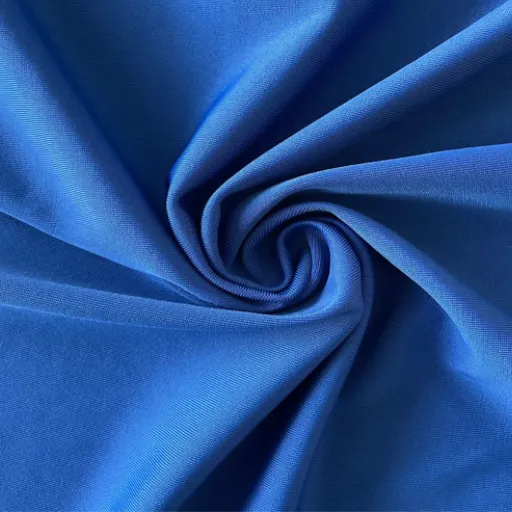
What Makes Polyester Stretchy?
Polyester is termed to be elastic or stretchy mainly due to its chemical composition and the method of production. The production of polyester fibers is synthetic and it mainly comprises products from the petrochemical industry. During the manufacturing process, the fibers are specifically designed to have a certain amount of elasticity through the orientation and stretching of the polymer chains. The stretching action provides the material the ability to deform under force and recover after the force is no longer applied.
Furthermore, the stretchability of polyester can also be improved by blending it with other elastic fibers like spandex or elastane. Combining these materials results in polyester fabrics that are more mobile, hence, they can be used in activewear, sportswear, and other clothing that require a greater range of motion. Blend percentages usually have a say in the overall stretch properties of the fabric.
Moreover, the fabric’s structure also impacts its stretch characteristics. Knitted polyester fabrics are generally more elastic than woven types, the reason being in the manner the knitting loops allow more movement. This structural difference makes knitted polyester an option perfectly suited for stretchable garments, whereas woven polyester tends to be more classical and durable. Taking these factors into consideration is imperative for making the right choice of polyester fabric for specific requirements.
Polyester Stretch Influencing Factors
The stretch of polyester is dependent on a number of major factors, like the kind of polyester fibers, the blending ratio, the openness of the weave or the thickness of the knit, and the use of any other treatments or technologies during the production process. These factors are discussed in more detail below along with recent data supporting them:
- 1. Fiber Composition
The stretch of polyester is determined by its molecular structure. Ordinary polyester fibers cannot stretch by themselves but can be made more elastic if blended with other elastic materials like spandex or elastane. Industry data say that using 5%-10% of spandex in the polyester fabric results in an increase of up to 30% in its stretching property, thus providing sportswear-like comfort due to the wide range of movements.
- 2. Weaving or Knitting
The fabric’s stretch property is affected by the technique used for the manufacturing of polyester, whether it is weaving or knitting. Knitted fabrics, for example, can be pulled and stretched more than woven ones because of the loop-like structure of the knitting process. A recent analysis from the field of textiles says that the horizontally stretchable area of double-knit polyester fabrics is about 15% larger compared to single-weave polyester fabrics, which means they are certainly right for making activewear.
- 3. Mechanical Treatments
Mechanical or chemical treatments can be used on polyester fabrics in order to enhance their stretch properties. Heat setting, crimping, or applying bi-component fibers are some of the methods that can enhance elasticity. A 2023 study asserts that heat-treated polyester can possess a maximum of 20% in both longitudinal and crosswise stretch.
- 4. Blending with Other Materials
Polyester has different stretch properties when mixed with cotton or wool as it showcases different stretch characteristics. For instance, a 60-40% cotton-polyester blend usually has good stretchability and at the same time, adds softness and breathability. Recent market data reveals that such blends are highly prevalent in casual wear, leading to a $17 billion global demand in hybrid textiles, a significant contributor to the textile industry.
- 5. External Conditions
Polyester’s ability to stretch is impacted by external conditions like temperature and humidity. Higher temperatures tend to render polyester fibers somewhat more flexible; however, in any case, non-stop heating would not be good for the fabric’s longevity.
Key Insight: Manufacturers and consumers can choose polyester fabrics that are perfect for different purposes if they know about these factors, such as fitness wear, upholstery, or industrial applications. Furthermore, the technology applied in textiles is advancing very rapidly leading to new functional and comfortable materials created through stretch modifications in polyester.
The Stretchiness of Polyester: How Much Stretch is Normal?
Polyester fabric is not inherently very flexible in its conventional state. The fibers are developed primarily for longevity and resistance to the effects of heat and moisture rather than giving elasticity. Nonetheless, production of polyester has come a long way, and today, the fabric is mixed with elastic fibers like spandex or elastane, thus its hygroscopicity is greatly enhanced. Blending is carried out extensively in sportswear and body-hugging clothes where stretching is of utmost importance.
In the case of pure polyester fabric, normal stretchiness means giving very little at all under tension. In its pure composition, polyester might stretch a little with force but will immediately recover its original shape thus greatly suitable for applications that need resilience and structure. However, the stretchy polyester blends can stretch more frequently, up to around 10-20% or even more, depending on the amount of elastic fibers incorporated in the blend.
It is significant to realize that the stretchiness that is considered “normal” is based on what the polyester fabric will be used for. Fabrics meant for fitness attire, for instance, typically require a higher percentage of stretch in order to allow easy movement and be comfortable. Conversely, upholstery fabrics would usually stretch less as they are made to bear heavy use and therefore maintain their shape longer. It is pivotal to comprehend these differences so that the exact type of polyester fabric for a certain purpose can be selected.
Practical Applications of Polyester Stretch
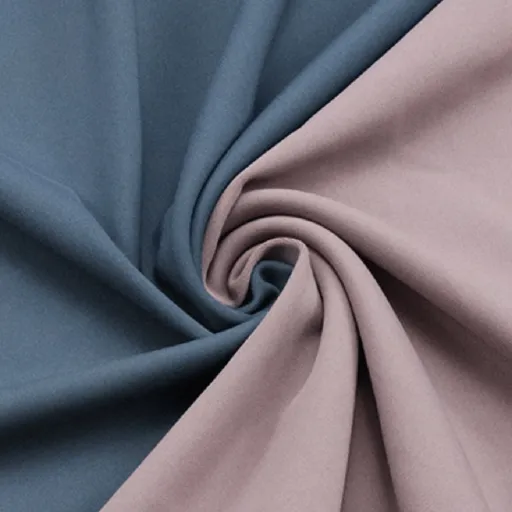
Polyester Apparel: Fashion and Function
Polyester stands out as one of the most common materials used in the garment industry and is absolutely the most widely used synthetic fiber in the world market. Its various advantages like versatility, durability, and resistance to being stretched, make it suitable for both fashion and functional clothing. The stretch in polyester when mixed with spandex, for example, can make a garment snug but easy to move in, which is very much the case in the activewear, athleisure, and sports-specific categories where people want their garments to be both supportive and flexible.
The fact that polyester can be used in the fashion world is due to its flexibility to take different forms, such as in the case of its dyeing. Its holding of dyes gives garments the character of being long-lasting and colorful. Besides, polyester’s wrinkle resistance and lightweight property make it every day and for business and travel purposes very easy and pleasant.
Polyester stretch fabrics when considered from the functional side, provide the utmost comfort and the greatest range of motion during sports and other physical activities. They draw moisture away from the skin very effectively hence keeping the person dry and retaining their shape even after being treated and used a lot. The union of style and utility makes polyester stretch fabrics an absolute necessity in the closets of people around the world.
Stretchy Polyester Sportswear
One of the most appreciated materials in the manufacturing of sportswear is polyester stretch fabrics because of their remarkable thermal properties. They are very light, providing breathability, and have a high degree of durability which makes them capable of withstanding the most strenuous physical activities. Furthermore, their elastic property grants a full range of motion; thus, athletes and fitness lovers alike are able to deliver their best performances without any limitations. Also, these fabrics can retain their contour throughout despite their frequent use and leak gently.
Moisture-wicking ability is another important attribute of stretchy polyester sportswear that gives it an edge over other fabrics. The fabric is made in such a way that it absorbs perspiration from the body and dries very quickly, thus maintaining the body’s temperature and the wearer’s comfort during vigorous workouts. This characteristic not only improves performance but also minimizes the risk of chafing and skin irritation, hence being the most preferred fabric for long-lasting activities.
In addition, polyester stretch fabrics offer design and style versatility. They can be made to fit tightly or loosely according to the user’s demand and activity level. Many clothing items made of this material also resist creasing and are easy to clean which further enhances their attractiveness. Whether it be running, yoga, or team sports, stretchy polyester is a reliable choice that is still taking over the activewear market.
Polyester in Activewear: Advantages and Disadvantages
✓ Advantages
- • Exceptional Durability: Highly resistant to wear and tear, ensuring longer garment life
- • Excellent Moisture-Wicking: Draws moisture from skin and evaporates quickly
- • Lightweight & Breathable: Good ventilation reduces overheating during workouts
- • Shape Retention: Maintains fit and performance throughout use
- • Rapid Drying: Can be washed and reused quickly for regular workouts
- • Easy Maintenance: Resists creasing and simple to clean
✗ Disadvantages
- • Poor Odor Control: Cannot control odors as effectively as natural fibers during long workouts
- • Environmental Impact: Being a plastic material, may contribute to microplastic pollution through washing
- • Potential Solution: Recycled polyester can help alleviate environmental concerns
Conclusion: All in all, despite the aforementioned considerations, polyester is still the most preferred option in the activewear market because of its performance, comfort, and practicality.
Caring for Polyester Clothes
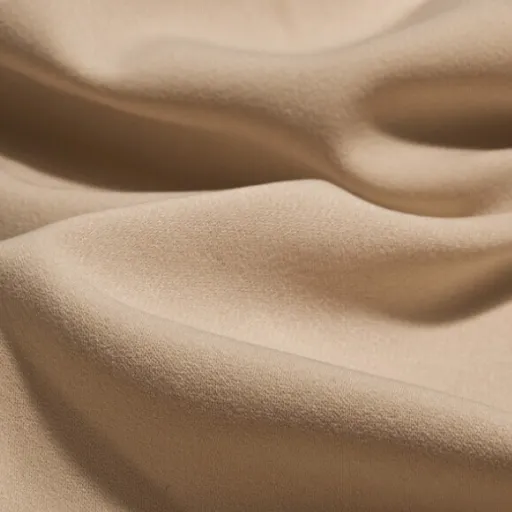
Washing and Drying Tips for Polyester
Polyester is a tough fabric with various applications, but it is very important to take care of it properly in order to keep the quality and extend the life of your polyester clothes. Below are some thorough washing and drying tips for handling polyester successfully.
Washing Polyester Items:
- Cold or warm water setting (below 104°F or 40°C) is the right setting for machine washing as the fibers can get damaged if high heat is used. Select a gentle cycle and mild detergent to prevent the material from getting stressed. Recent studies indicate that detergents made specifically for synthetic fabrics can not only remove sweat and smell but also keep the fabric’s quality intact.
- Before washing, turn polyester clothes inside out; this will not only reduce wear on the outer surface but also limit pilling.
- Do not fill the washing machine beyond its capacity, so cleansing is done well and there are no wrinkles formed.
Drying Polyester Clothes:
- The safest way to dry polyester fabrics is by air; this way, there won’t be shrinkage or unwanted folds of the fabric. Hanging them on a line or laying them on a clean surface is enough.
- If you must use a dryer, then it would be best to set the dryer to low heat or tumble-dry-low, as high temperatures can make the polyester fibers lose strength and thus, over time, degrade the fabric. The study has shown that keeping the temperature below 150°F (65°C) is the best for polyester drying.
- Make sure to take the clothes out of the dryer right away to prevent wrinkles and the development of static electricity, which is a problem with synthetic fabrics. In case of static, a dryer sheet or fabric softener can be useful.
Stain Removal:
- Treat the stain with a small amount of mild detergent or stain remover in the affected area before washing it. Rub the stain gently in circular motions to lift it without damaging the fabric.
- Stay away from bleach and harsh chemicals, as they can harm polyester materials.
Additional Care Considerations:
- When it comes to ironing polyester, choose a low-temperature setting and a pressing cloth to prevent scorching or glare marks that are difficult to remove from the fabric.
- Mildew and odors can be avoided by storing polyester garments in a cool, dry place.
Important: If you keep these tips in mind and also know the characteristics of polyester, you will be able to use your clothes for thrice as long and still not loose their functionality, elasticity and overall quality.
Keeping the Stretch and Quality of Polyester Clothes
General Wash Care for Polyester Clothes
The stretch and quality of polyester clothes can be maintained only if they are properly washed. Although polyester is a strong material, a gentle wash can help it maintain its elasticity and overall structure. Always use a gentle detergent to wash polyester fabrics in cold or warm water. Avoid the use of fabric softeners, as they tend to break down the fibers with time and thus shorten the life of the material’s elasticity.
Drying and Ironing Practices
After washing, the best way to dry polyester clothes is to either tumble dry on low heat or air dry them which is the least likely to result in shrinkage or stretching. High temperature can lead to loss of stretching in polyester, thus it is advisable to stay away from or limit the use of tumble dryers. If you want to iron, do it on a low-temperature setting and place a pressing cloth between the garment and the iron. That way, the fibers won’t get damaged and the fabric will be smooth without losing its original quality.
Proper Storage
Another factor that contributes to the longevity of polyester garments is their proper storage. Store them in a cool, dry place away from direct sunlight or humid areas to eliminate the chances of odor and mildew. The best way to store clothing is to either hang it on padded hangers or fold it neatly, which will help to maintain its shape and elasticity. By adherence to these simple steps, it is possible to prolong the life of polyester garments while also maintaining their stretch and overall quality.
Common Mistakes to Avoid When Caring for Polyester
❌ Mistake #1: Using High Heat
Using high heat for washing or drying is one of the most frequent mistakes that are committed in the care of polyester. Every day, synthetic polyester fabric is unable to withstand such extreme conditions and may respond by shrinking, weakening, or even losing its shape altogether. Always at the very least use a low or medium heat setting for washing and drying polyester items so that their quality is not only retained but also they are protected from damage.
❌ Mistake #2: Using Harsh Detergents or Softeners
Also, a common mistake is the use of harsh detergents or softeners. These kinds of products can break down the polyester fibers gradually leading to discoloration or even loss of elasticity. Always choose and use gentle detergents and refrain from using large amounts of cleaning agents. Moreover, fabric softeners sometimes can leave a coating on polyester which then dulls its shine and makes the fabric feel less soft.
❌ Mistake #3: Improper Sorting
Besides, a common cause of issues like color bleeding and lint transfer is improper sorting of clothes before washing. Polyester is prone to attracting lint so it is a must to wash it along with cotton towels and other textiles from which lint is easily released. Bunching reds, blues and blacks together will also prevent dyes from the darker clothes marking the lighter polyester garments thus keeping them looking bright for a longer time.
Frequently Asked Questions (FAQ)
Q: Is polyester stretchable?
A: Polyester, in general, is considered to be less stretchable as spandex and elastane fabrics. But, depending on the blend, polyester’s stretchability can vary. To illustrate, polyester-spandex blends yield a fabric with plenty of stretch and comfort.
Q: What kinds of polyester blends are stretchable?
A: The extent of the stretchiness of the fabric is determined by the nature of polyester blends. Blended polyester and spandex are famous for being elastic and thus are used in sporty and figure-hugging apparel. Conversely, woven polyester fabrics might possess only slight stretch.
Q: In which way does the amount of stretch in polyester depend on the fabric type?
A: The amount of stretch in the polyester fabric is determined by the type of weaving and the blend of other materials. Woven polyester fabrics usually have less stretch, while knitted polyester can allow more flexibility and gentle stretch.
Q: Can you mix polyester fabric with other materials?
A: Yes, polyester is blended with different materials to make a fabric that has specific attributes. One of the most common polyester blends is that of polyester cotton which offers slightly more stretch and comfort or polyester with five other fibers for better durability and feel.
Q: What are the advantages of using polyester fabric?
A: Polyester is the fabric of choice for many uses due to its strength, resistance to shrinkage, and easy care. It is also lightweight and can be made into light-colored polyester fabrics that take prints well. Moreover, polyester has the advantages of being wrinkle-resistant and drying quickly.
Q: Does stretching your polyester change when washing?
A: Yes, the stretch of the fabric can be affected by dipping it in water. Therefore, care should be taken to follow the instructions provided to keep its characteristics. The application of soft washing methods may be able to conserve the fabric’s elasticity and prevent it be less stretchy over time.
Q: Is polyester fabric stretchable in relation to cotton?
A: Overall, the answer is that cotton is more stretchy than polyester. Cotton can supply some natural stretch, while polyester fabrics are built for longevity and may need blending with stretchable fibers to get the required extensibility.
Q: How Does Wearing Polyester Feel Like?
A: The very first thing that polyester fabrics come to mind as their smooth and lightweight touch. Depending on the mixture, they can be soft and cozy on the skin. Polyester is frequently created to imitate the touch of other materials while still providing the benefit of durability and low maintenance.
Q: How can I ensure that my polyester garments remain elastic?
A: You should not use high temperatures when washing and drying your polyester clothes, as that would cause the fibers to become less elastic. Instead, use cold water for washing and air dry them if you can. Taking care of them properly will keep both the stretch and the strength of the fabric for a long time.
References
-
Is polyester stretchy? All you need to know about polyester – A detailed explanation of polyester’s stretch properties and its comparison to other fibers like spandex.
Is Polyester Stretchy? A Guide To Polyester Fabrics – A guide discussing the stretchability and durability of polyester fabrics.
Alternative Stretch Fabrics: What Sustainable Options to Supplant Elastane? – Insights into polyester’s elasticity and its sustainable alternatives.
Is Polyester Fabric Stretchy? 11 Samples Tested – A practical analysis of polyester’s stretch properties based on fabric type (knitted vs. woven).
Is Polyester Stretchy? Types of Polyester and More – A breakdown of the different types of polyester fabrics and their stretch characteristics.









